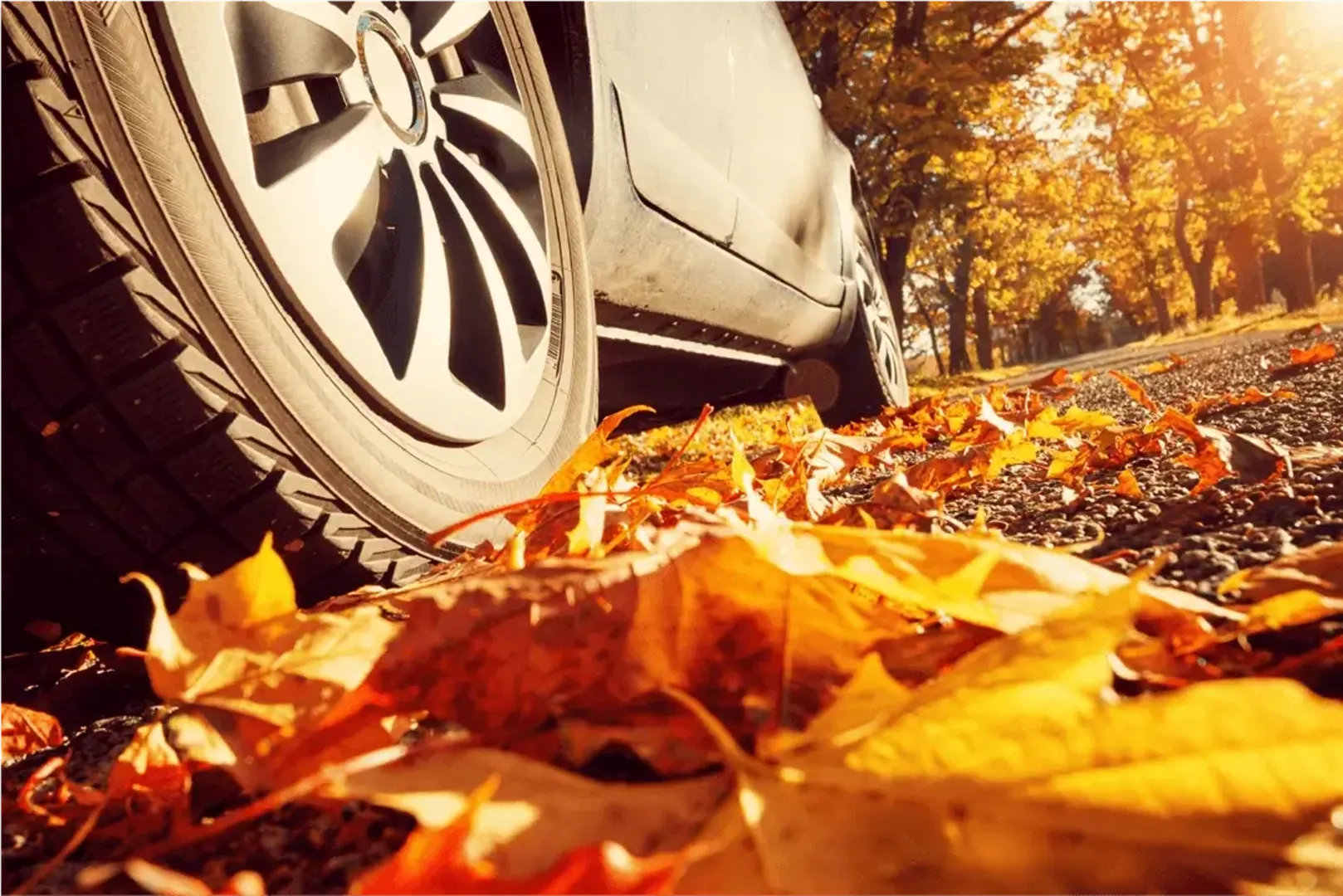
As the nights draw in and the weather becomes more unpredictable, it’s important that your vehicles and drivers are ready to face anything autumn brings out on the roads. To help everyone get ready for the hazards and difficult conditions they’ll face while behind the wheel, here are some tips on how to drive safely in the autumn season.
Why you need to be ready for autumn driving
Anyone that’s driven during the autumn knows that reduced daylight hours, colder and rainier weather and an increased number of hazards make roads more dangerous in this season. Research from insurance provider Zurich found that when the clocks go back, the number of accidents increases between the hours of 4pm and 7pm. This means that, even if your employees aren’t out on the road all day, they’re still at risk during their commute.
The responsibility for driving safely in autumn falls on both individual drivers and employers. To fulfil their duty of care, employers need to make their teams aware of the dangers and get their fleet prepared for any hazards or extreme weather. To keep themselves and others safe out on the road, drivers need to make sure their vehicle is in a good condition and that they’re prepared for any difficult driving conditions.
How to stay safe on the roads in autumn
Before setting off on an autumn drive and throughout the whole season, there are a few tips drivers and employers can share and follow to make sure everyone stays safe.
Check vehicle engines
Drops in outdoor temperatures can cause problems in badly maintained engines. Taking a vehicle in for a service before the autumn weather hits is recommended to make sure it’s in top condition and will keep running throughout the season. Checking oil, antifreeze and coolant levels will ensure the engine has everything it needs to cope with the cold weather. Batteries can also be damaged by lower temperatures, so if it’s already been struggling or hasn’t been changed in a few years, it might be worth replacing (or at least having it checked) before the autumn.
Keep an eye on tyres
Ice, rain and strong winds can all threaten to push vehicles off the road, so making sure your tyres have enough grip to deal with these weather conditions will help keep you safe. When looking at your tyres, make sure there is a tread of at least 3mm (the width of the rim on a 20p coin) and that there are no splits, frays or other signs of wear. It’s a legal requirement to make sure your tyres are safe, so keep an eye on their condition throughout the season. If you do lots of driving or are often out on rural roads, consider changing to winter tyres to give you extra grip in the colder weather.
Be sure sighted
Autumn brings fewer daylight hours, so being able to see clearly and be seen by others is a priority. Checking the bulbs in your rear (including your brake and indicator lights) and front lights will help you be seen by others. Plus, testing your front and fog lights to ensure they’re functioning correctly and pointing at the right angle will give you complete visibility.
As dawn gets later and dusk comes earlier in the day, low sun and dazzle become more of a danger, so make sure your visors are in good condition and always have a pair of sunglasses to hand. Getting any windscreen chips, cracks or scratches fixed before the colder weather will also stop your visibility from suddenly becoming worse. Checking the windscreen fans and heaters, topping up your wiper fluid with cold-weather liquid and making sure your wipers are in good condition will mean you’re ready for sudden ice, rain or fog.
Stay weather aware
The weather in the autumn can become more unpredictable and change very quickly. This means you need to be ready for any sudden ice, rain or fog. As well as checking the forecast before you head out on the road, keeping an emergency kit of the following items in your car will help you stay safe if the weather changes or you have an accident:
- De-icer spray.
- Ice scraper.
- A spare tyre and change kit.
- Jump leads.
- A torch.
- Warm layers or blankets.
- A hi-vis jacket and luminescent signs.
- A mobile phone charger.
- A paper map, A to Z and breakdown provider details.
- Snacks and a bottle of water.
Adopt a steadier driving style
Less daylight, worse weather and more difficult road conditions mean drivers need to leave more time for their journeys and lower their speeds, even on routes they know well. Wet leaves, ice, wildlife, low sun, sudden rain or fog are just some of the hazards that can suddenly appear on the road in autumn. Keeping both hands on the wheel at all times, minimising distractions, ensuring they’re alert and leaving enough time to take journeys more slowly are the most important steps drivers can take to stay safe.
Make sure your team are ready for autumn
If you run a fleet or your employees are often out on the road during autumn, then keeping your vehicles well maintained and informing your drivers about the dangers they might face is key to fulfilling your duty of care. Servicing your fleet and giving your employees tips on how to drive safely in autumn will make sure your team is as safe as possible when out on the roads in this colder, wetter season.


